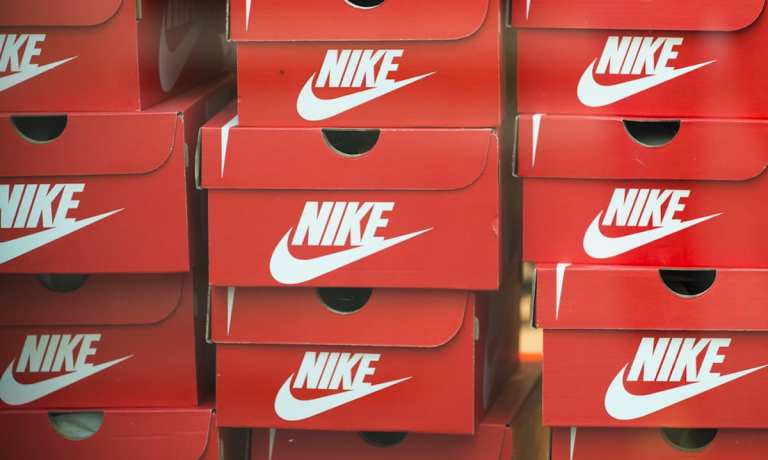
“We face a new degree of complexity,” Nike CFO Matthew Friend told analysts Thursday, in the wake of the athletic shoe, apparel and equipment maker’s fiscal first quarter earnings results.
But for an iconic brand whose stock has now been cut in half in just 11 months, that may be the understatement of the year, as “complexity” does not begin to reflect the world of problems that are squeezing down on the 50-year-old Oregon-based business.
From sales in China that fell 16%, to North American inventories that jumped 65%, to strong dollar headwinds that whittled 10% revenue growth down to 4%, to container ships and orders that came too slow and then too fast, the past three, six, nine and twelve months have delivered a bear market and an unprecedented come down in the land of the “Swoosh.”
“As a result, we’re taking decisive action to clear excess inventory, focusing on specific pockets of seasonally late product, predominantly apparel,” Friend told the analysts, investors and reporters who dialed in to hear what was being done to right the good ship Nike.
A New Game Plan
“This quarter, it became clear to us that conditions in North America were shifting once again,” Friend said of the three-month period that ended August 31st, before outlining the Goldilocks-like dilemma of trying to juggle the three moving targets of supply, demand and shipping.
While strong consumer demand for full-priced Nike’s, Jordan’s and Converse sneakers triggered early ordering by retailers, the unpredictability of delivery times caused in-transit inventories to swell 85%.
“Then transit times began to rapidly improve and give signals that further improvement may be coming,” Friend added — that is, until inflation and economic concerns started to erode consumer confidence, prompting Nike and virtually every other retailer of size on earth to start to mark prices down all at the same time.
That’s great news for athleisure-minded shoppers ahead of the busy shopping season, but it’s terrible news for retailers and brands who are biding time and hoping to catch a break soon.
Can I Be Direct?
To be sure, although Nike’s earnings were down 20% and its low-single-digit sales growth a fraction of what it once was, not all the many global retailers and brands can move $12 billion worth of merchandise in 90 days.
“Our focus remains not only to grow market share, but also to grow the entire market,” Nike CEO John Donahoe said on the call, noting the company’s unique ability and unmatched endorsement roster will enable it to expand the future of sport.
“I wouldn’t trade Nike’s position with anyone,” Donahoe said, who has managed in crisis-mode almost since the day he took the top job at the company in January 2020.
To grow that overall market, as well as Nike’s share of it, Donahoe pointed to at least two key themes that the company plans to push on. The first is “storytelling” or using its stable of sports stars and its marketing muscle and expertise to get athletes engaged with the brand.
At the same time, Donahoe said Nike would forge ahead with its direct-to-consumer (D2C) and marketplace strategy.
“We continue to build a compelling retail footprint with our own brick and mortar fleet as [D2C] has become an even bigger part of our business,” Donahoe said of a quarter that saw direct sales up 8% and digital revenue rising 16%, while pledging to invest to become “a better retailer” with the goal of becoming a world-class player.
“There’s never been a better time to be in the sport and wellness business,” Donahoe said, which may be true — but there’s also never been a year in which Nike’s stock fell 50%.
For all PYMNTS retail coverage, subscribe to the daily Retail Newsletter.